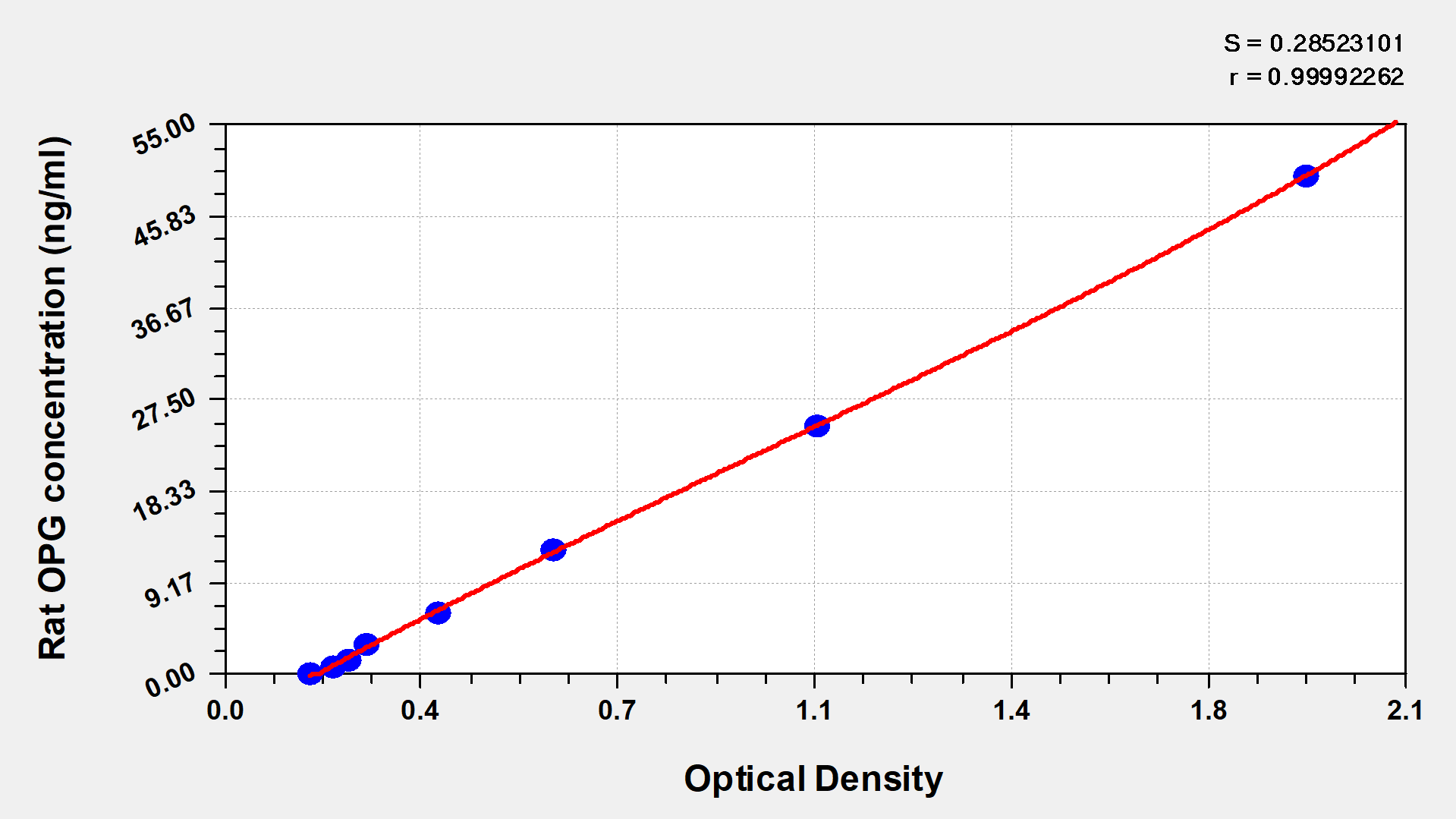This Rat Osteoprotegerin (OPG) ELISA KIT is a powerful tool for researchers in the field of cell biology,bone metabolism, bone homeostasis. This high-quality ELISA kit allows for the accurate and reliable quantification of Rat Osteoprotegerin (OPG) levels in serum, plasma, and tissue homogenates.
The Rat Osteoprotegerin (OPG) ELISA KIT is designed for quick and easy detection of OPG in Rat samples. It has a wide detection range of 0.78 ng/ml to 50 ng/ml, with a sensitivity of 0.195 ng/ml. The assay time is only 1-5 hours, and the sample volume required is just 50-100ul, making it an ideal choice for high-throughput screening. The kit uses a sandwich assay principle for quantitative measurement of Rat Osteoprotegerin (OPG) levels, and it can be read using a standard 450 nm wavelength detector.






